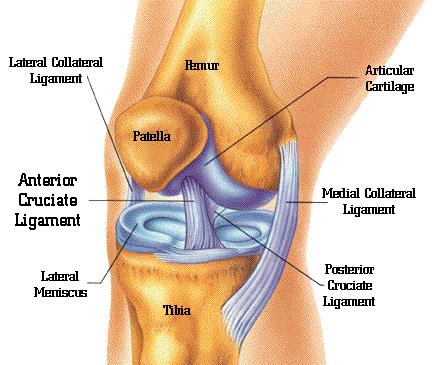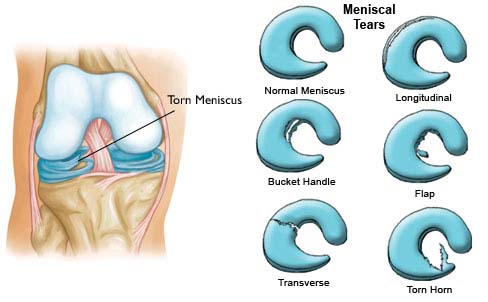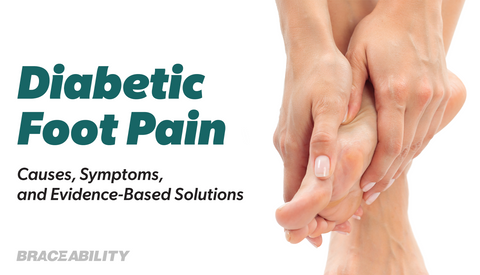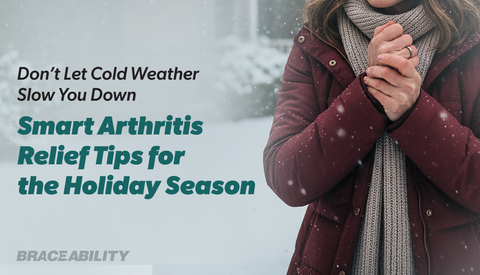Knee Injuries: The Complete Guide to Diagnose your Knee Pain Symptoms
Click below to learn more about specific Knee Injuries:
Common Knee Injuries
The knee is a complex area of the body that is highly instrumental in enabling movement. Not surprisingly, this region of the body is also an area often injured during sports participation, though it can be injured by other activities too.
Some common knee injury symptoms include the following (depending upon the underlying knee problem):
- Pain of varying degree (irritating to acute) and duration
- Instability, giving out
- Tightness, stiffness
- Swelling
- Redness
If one has some of these conditions in the knee and suspects knee problems, one should first seek out the help of a professional. Diagnosing knee injuries on one’s own often leads to misdiagnosis, an even longer healing time and possibly additional damage to the knee. After all, diagnosing knee problems often requires the use of X-ray or magnetic resonance imaging (MRI) scans that are not available to the general public. Depending on your diagnosis, BraceAbility offers a wide variety of knee injury treatments.
Causes of Knee Injuries
While most types of knee injuries stem from certain motions or impacts involved with sports, others can simply be chalked up to the wear and tear of aging. For instance, osteoarthritis is one of the more common knee disorders that is the result of the wear and tear that cause knee joint problems. This happens primarily due to aging, though one’s risk of suffering this painful condition can be increased by certain activities and injuries (such as ligament tears or cartilage damage) earlier in life.
One can also sustain knee injuries from falling, though again one’s likelihood of suffering a tear or other damage increases depending upon the number of years one has lived or the amount of “abuse” one’s body has undergone. This is because ligaments, cartilage, joints, etc. weaken and/or deteriorate with age and use.
Some opt to undergo knee replacement surgery after a certain amount of damage has occurred to the knee. Even after this operation, however, some cite persistent knee replacement problems such as pain. Some orthotics can be helpful toward easing such problems with knee replacements if the underlying cause is related to kneecap function or alignment problems.
In contrast, a developing child might experience what is known as Osgood-Schlatter Disease. This type of knee problem is characterized by a painful lump beneath the kneecap. It typically forms during a growth spurt. Such knee injuries in children are more common if they are involved in sports that require running, jumping or quick direction changes. Thankfully, there are Osgood-Schlatter knee braces for getting a child pain-free and back on the field.
Knee Injuries: ACL, PCL, LCL, MCL
Knee ligament injuries do not distinguish by age. In fact, an injury to the anterior cruciate ligament (ACL) is described by some as an epidemic among children, especially females.
There are four major ligaments in the knee and each and every one of them can be torn:
- Anterior cruciate ligament (ACL)
- Posterior cruciate ligament (PCL)
- Lateral collateral ligament (LCL)
- Medial collateral ligament (MCL)

Ligament tears often result from sudden changes in motion. Thus they are especially common among soccer players, football players, basketball players, skiers, and gymnasts, among others.
The increase in year-round sports participation among children with less “play” (helpful for even muscle development) has resulted in an ACL tear being an increasingly common knee injury. Tears to the ACL, especially, are a significantly more common type of knee problems in women than for men, due to differences in hormones, flexibility, and physical structure.
This is concerning for several reasons. One, ACL injuries significantly increase one’s risk of additional injuries to the knee down the road. It also greatly ups the odds of osteoarthritis later in life. And finally, repairing an ACL tear requires surgery and months (six to 12) of intense rehab. As you might imagine, this can also come with a daunting price tag. With this in mind, BraceAbility offers ACL tear braces at discounted prices.
Knee Injuries: Meniscus and Other Cartilage Damage
Another one of the more common sports knee injuries is damage to the cartilage of the knee. More specifically, knee meniscus injuries are relatively common knee problems.
The meniscus refers to two rubbery, c-shaped cartilage discs that cushion, absorb shock and stabilize the knee. A quick turn or twist can tear the meniscus, causing knee cartilage problems. Such tears are especially common among athletes whose sports involve contact, such as football or wrestling. View our best knee braces and orthotics for football here.

This Compression Athletic Knee Brace is BraceAbility’s No. 1 seller among these types of athletes as the sleeve provides support without restriction motion. The compression material of the brace also promotes circulation and thus healing and mobility.
Back of knee injuries often involve tears to the cartilage of the knee, too. Other reasons for pain in this region of the knee might include arthritis or a hamstring injury.
Knee Tendon Injuries
Another common source of pain in the knee is knee tendon injuries. Specifically, athletes and non-athletes alike often cite problems with the patella tendon. This tendon connects the kneecap (patella) to the shin bone (tibia); it is highly instrumental for explosive motions of the leg, such as jumping or kicking.
Frequently engaging in such activities can result in patellar tendonitis, or jumper’s knee, a relatively common overuse injury on the basketball and volleyball court, though it is not exclusive to sports involving jumping. For instance, this patellar tendon injury is also a relatively common among tennis and soccer players.
Common Knee Injuries from Running
Another source of knee anatomy injuries is the kneecap itself. Patella dislocation or dysfunction can cause knee instability and pain. A mistracking patella goes more specifically by the name of patellofemoral pain syndrome (PFPS).
This overuse injury is especially common among runners. Indeed, it is also known as “runner’s knee.” The faulty tracking of the patella irritates the femoral groove, irritating the cartilage beneath the knee and causing pain.
One may also hear the term “chrondromalacia patella” thrown about when one is talking about running knee injuries. This is a general term to reference damage to the cartilage beneath the kneecap.
And of course, knee conditions do not only include major tears and the like to ligaments, tendons, menisci and the like. One can also experience more “minor” knee injuries that cause instability and pain, such as a knee sprain or strain. These are actually some of the most common knee injuries, meaning there are also a number of knee sprain orthotics for easing discomfort and promoting healing following such an injury.
How to Prevent Knee Injuries
And once one is on the road to healing from any type of knee pain, there are some measures he or she can take to stop the unpleasant symptoms of knee injuries from flaring up again. Preventing knee injuries include taking some of the following precautions before, during and after athletic activity:
- Use proper gear (supportive shoes, protective pads, etc.)
- Use proper form (e.g., make sure you are landing a jump properly)
- Do not suddenly increase workout duration or intensity; ease into such increases
- Stretch – before and after a workout
- Always warm up and cool down
- Focus on achieving balanced leg muscle strength
- Hydrate while working out
- Avoid working out on hard surfaces
- Pay attention to and respect pain; take time off to allow for healing.
As you might guess, not doing many of the aforementioned things increases one’s chances of sustaining different types of knee injuries.
By no means is this a comprehensive list of knee injuries. Rather, it is a brief overview of some of the most common knee injuries. Again, it is best to get help from a professional before embarking on any type of treatment.
Knee Pain Symptoms, Causes, and Treatment
Knee pain is a common occurrence for many Americans of all ages every year. Knee pain symptoms can manifest in a wide variety of ways. The extent of knee discomfort itself can vary from severe knee pain to dull knee pain to knee weakness and pain to stiffness. Knee pain and swelling often go hand in hand.
The duration of the pain may vary from chronic knee pain to knee pain that comes and goes to pain only when one is doing certain activities, such as knee pain after running. Regardless of the severity or duration of knee pain, one should not attempt knee pain self-diagnosis.
Diagnose Knee Pain
A professional, such as a knee pain specialist or doctor, can deliver a more accurate knee pain diagnosis and get one on a course of treatment for knee pain. Self-diagnosing knee pain and embarking on a course of self-directed treatment opens the door for misdiagnosis and possibly even further damage.
Ignoring pain in the knee is also unwise as this could cause additional damage to the cartilage or connective tissue of the knee, which can increase one’s risk of osteoarthritis knee pain later in life. So the message, ultimately, is that one should enlist the help of a professional in obtaining knee pain relief so that one can get free of pain and on with life.
Medical Knee Pain Causes
Knee pain can stem from a variety of conditions as well as activities. One common complaint is knee joint pain, which can cause stiffness and possibly knee pain when bending. More specifically, one might experience pain in the joints of the knee due to arthritis or osteoarthritis.
These troubles generally occur simply due to the wear and on the joints of the knee that occurs with aging, though injury and certain activities earlier in life can increase one’s likelihood of developing arthritis knee pain. Erosion of cartilage from aging can result in bone-on-bone knee pain.
Fibromyalgia is another syndrome that results in widespread pain across the body, including the knees. While the pain may feel like it is stemming from the joints, these areas are not actually affected. Unfortunately, fibromyalgia knee pain is not well understood, but there are ways of treating it.
Another condition that affects the body in a number of areas is Lyme disease. This is contracted via a tick and it typically affects the skin, joints and nervous system. According to Mayo Clinic, early signs of Lyme disease include a rash and flu-like symptoms. This is typically followed by joint pain and swelling, with Lyme disease knee pain being especially common. Neurological problems from the disorder can occur weeks or even years after one has been infected.
The nervous system can also be compromised by diabetes, and knee pain can result. Neuropathy refers to the nerve damage that occurs as a side effect of the glucose and blood pressure abnormalities that are associated with diabetes; it is most common in those who have had diabetes for an extended period. This can result in discomfort, such as sharp knee pain and numbness.
Sciatica is actually a symptom of an underlying condition rather than a disorder. Sciatica knee pain is caused by a pinched sciatic nerve that can occur due to slipped or herniated disk in one’s spine or a bone spur; more rarely a tumor or nerve damage due to diabetes can cause sciatic knee and leg pain that can range from mild to severe.
Another relatively common condition is knee pain during pregnancy and even knee pain after pregnancy. This is due to carrying extra pounds when one is pregnant, as well as increased levels of a hormone known as progesterone that increases the laxity of the muscles and the ligaments of the body so that one is able to give birth. The flip side of this, however, is that it allows the joints to move farther than they normally can, which can result in damage and pain. There are a number of exercises one can engage in for healing knee pain as well as braces to help with instability.
Knee Pain after a Fall
There are also a number of activities that can lead to knee pain. For one, a fall can cause a number of knee injuries such as a knee ligament tear. There are four major ligaments in the knee. Depending on which one(s) you tear, you may experience knee ligament pain on either side of the knee or inner knee pain.
One can also damage the cartilage that cushions the kneecap (the meniscus) via a fall or some other type of trauma, resulting in pain below knee cap or posterior knee pain.
A fall or blow to the knee can also cause knee pain bursitis. The bursa is a fluid-filled sac that decreases friction and cushions pressure points between one’s bones and the tendons and muscles around one’s joints. There are 11 of these in the knee that can be inflamed either via overuse or from impact. This typically results in knee pain above the kneecap or pain just below the kneecap on the inner side.
Knee Pain after Running
Sports are another common source of knee pain. For instance, knee pain due to running is so common that the term runners’ knee is used to describe the wide range of injuries associated with it. For some, this manifests as patella knee pain due to the patella (kneecap) not tracking as it should, resulting in aching knee pain that is known as patellofemoral knee pain. The mistracking of the kneecap irritates the femoral groove, causing medial knee pain. One may experience greater knee pain when squatting, climbing stairs or kneeling.
Iliotibial band syndrome (ITBS) is another relatively common source of lateral knee pain among distance runners. The IT band is a thick band of tissue that runs along the outside of one’s thigh, from the hip bone to the outer shin bone. It can become irritated in the area along the outer side of the knee where it runs across the bone and muscle. The Irritation hinders its ability to glide smoothly through the bursa, resulting in IT band knee pain.
Another culprit of runners’ knee can be unsupportive shoes or flat feet. Shoe orthotic inserts can be helpful in both of these cases to relieve knee pain.
Chronic anterior knee pain, or pain in the front of the knee, is a relatively common condition among people—especially women and adolescents—that can be brought on by suddenly increasing sports activity, such as running, imbalance of the thigh muscles or misalignment of the legs between the hips and the feet.
Other Types of Knee Pain from Sports
A number of sports involve quick changes in motion, such as a pivot to the hoop, a cut to avoid a tackle or a slide into third base. This can result in tears to the cartilage or connective tissue of the knee that in a number of cases requires surgery to repair. The ACL (anterior cruciate ligament) and PCL (posterior cruciate ligament) are fairly essential when it comes to sports activity in that they connect the shin bone to the thigh bone.
Because they are located at the interior of the knee, surgery is generally needed to repair tears to these cruciate ligaments. Unfortunately, ACL injuries are becoming increasingly common among athletes, especially children, and women.
The LCL (lateral collateral ligament) and MCL (medial collateral ligament) ligaments are located on the outer and inner side of the knee, respectively. These collateral ligaments are often injured during contact sports, such as football or soccer, with the MCL injury being the more common of the two. This is in contrast to tears of the ACL or PCL that are often non-contact injuries.
Symptoms of such injuries besides LCL and MCL knee pain include swelling and instability of the knee.
Jumpers’ knee, more scientifically known as patellar tendonitis, is a relatively common overuse injury in sports that involve jumping, such as basketball or volleyball. But don’t let the name fool you. It is not exclusive to sports involving jumping. Soccer and tennis knee pain as a result of jumpers’ knee are not uncommon.
Jumpers’ knee is caused by injury to the patella tendon, which connects the kneecap to the shin bone, causing knee tendon pain. A sudden increase in physical activity (in duration or intensity) can cause this knee pain tendonitis, as can tight hamstrings.
As I alluded in the discussion on runners’ knee, wearing non-supportive shoes for sports or everyday use can be detrimental to your knee health. Thus some find relief simply by switching to supportive shoes for knee pain.
How to Relieve Knee Pain
Again, it is important to enlist the help of a professional when deciding what to do for knee pain. In many cases, knee pain can be resolved simply by following the steps of RICE: rest, ice, compression and elevation. One might apply knee wraps for pain and ice for knee pain. A number of knee braces are helpful to this end as they provide targeted compression and massage for knee pain relief, not to mention this stimulates healing.
There are also a number of stretches and exercises one can engage in to ease pain in the knee. Physical therapy for knee pain can also be helpful for preventing knee pain from reoccurring. Some find yoga for knee pain to be helpful. When engaging in such strengthening and stretching exercises, one might find the use of a knee brace helpful for easing knee pain and providing stability and support.
Depending upon the underlying condition as well as the type of knee pain one is experiencing, a knee pain doctor might recommend more extreme methods such as injections for knee pain, acupuncture for knee pain, knee pain supplements, like glucosamine for knee pain, or even surgery as ways to get rid of knee pain. Following surgery, one will likely need a post-op knee brace.










